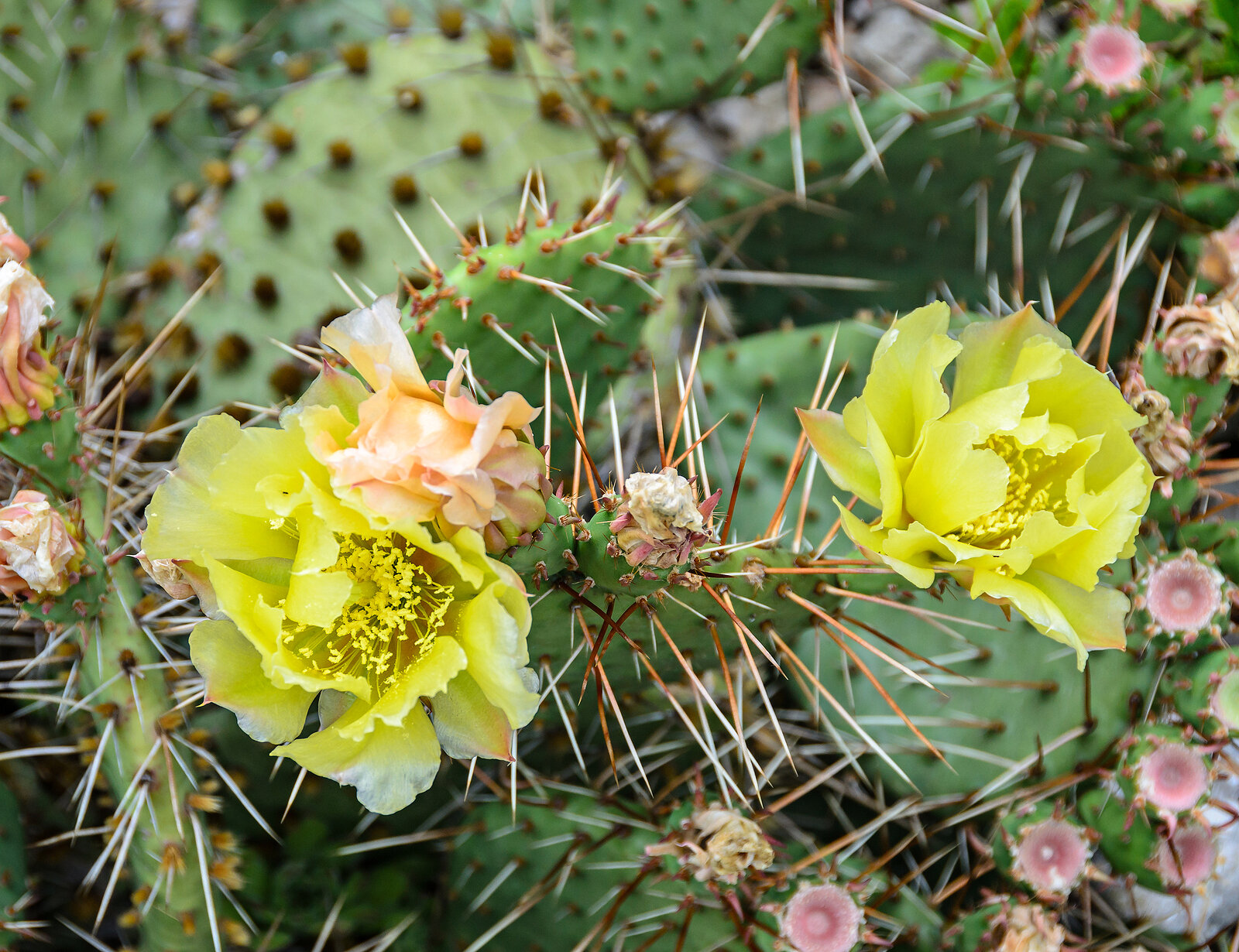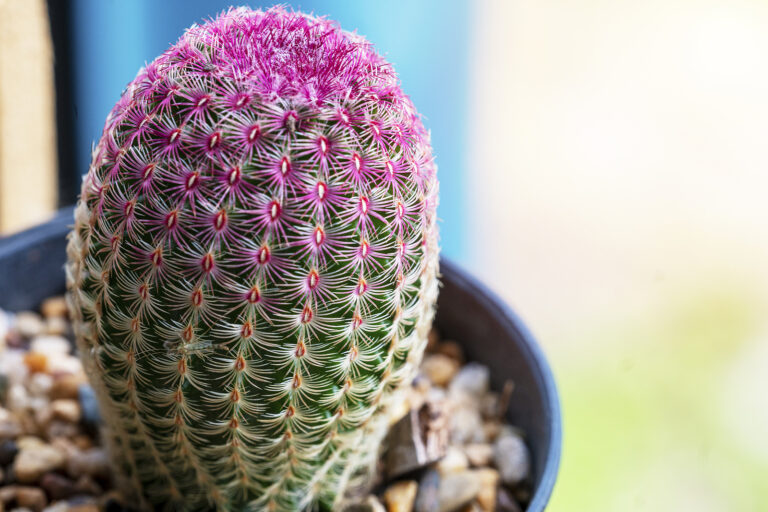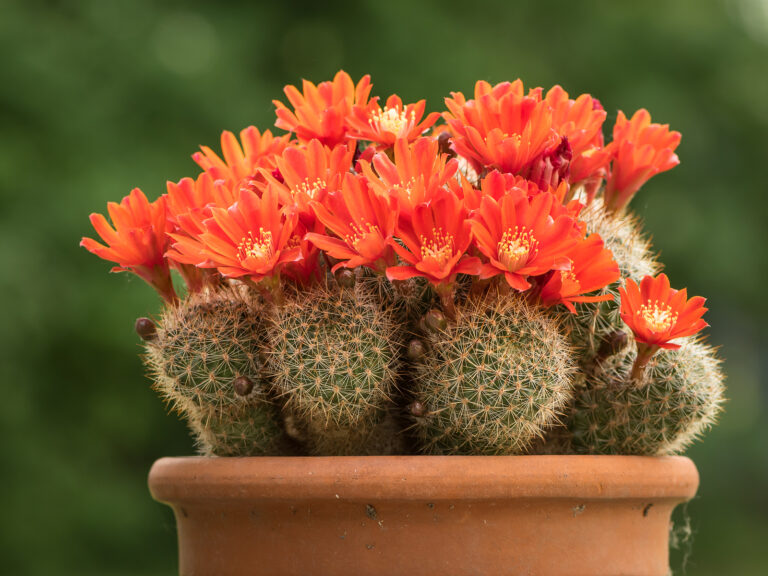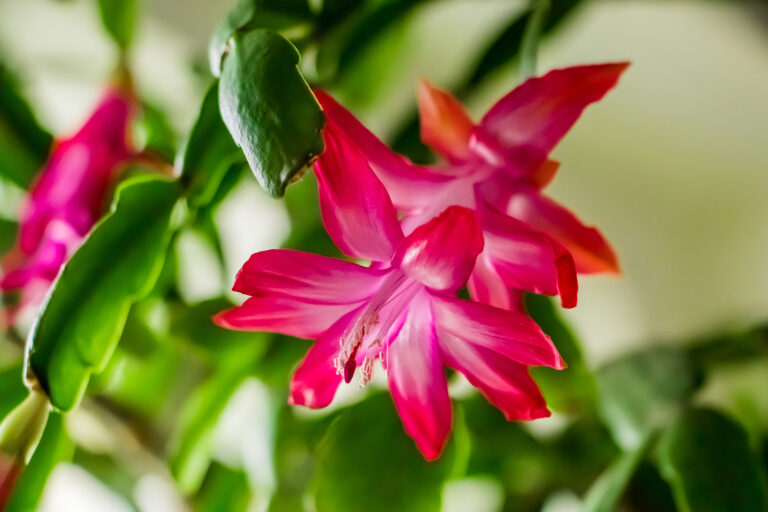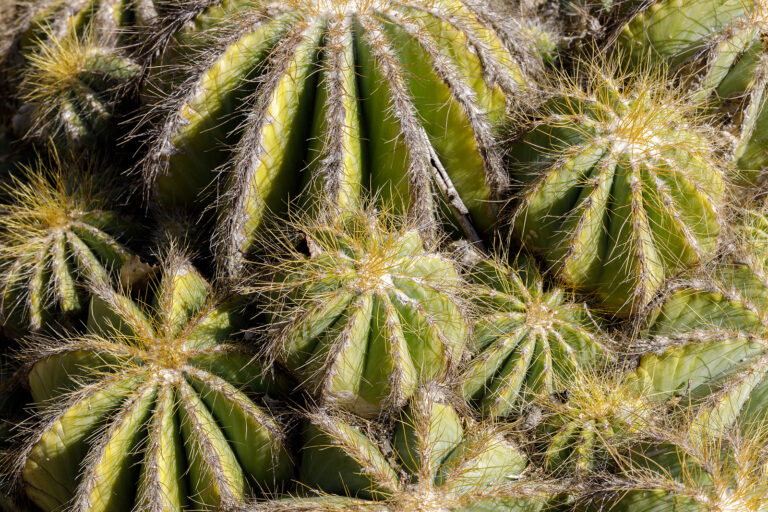How to Grow Opuntia – Prickly Pear – Bunny Ears
Opuntia is a cactus genus with three distinct groups based on growth form: the prickly pears that have flat-jointed pads, one growing out of the other; the tall cylindrical-jointed chollas; and the dwarf species with globular or cylindrical stems.
Most Opuntia species grow rapidly and are free-flowering with blooms of yellow, white, orange, purple, or red.
Plant Opuntia singly or in groups in spacious natural settings. Opuntia must be given plenty of room; they produce sharp bristles and spines that can be quite hazardous in small gardens.
Indoors, potted Opuntias such as O. microdasys, called Bunny Ears cactus, are perfect as house plants in a sunny window garden. Indoors Optunia must get sufficient light otherwise branches can become spindly and misshapen. Potted opuntias rarely get large enough to produce many flowers.
The Opuntia genus, commonly known as prickly pear cacti, includes a variety of species that thrive in arid regions. Here are some popular ones:
- Opuntia ficus-indica (Indian Fig Opuntia): This species is widely cultivated for its edible fruits (tunas) and pads (nopales), and it is often found in warm climates worldwide.
- Opuntia microdasys (Bunny Ear Cactus): Known for its harmless-looking, fuzzy spines called glochids, this species is a popular ornamental plant due to its unique appearance.
- Opuntia humifusa (Eastern Prickly Pear): A cold-hardy variety found in the eastern U.S., it produces yellow flowers and edible red fruits, making it attractive for both wildlife and gardeners.
- Opuntia engelmannii (Engelmann’s Prickly Pear): Native to the southwestern U.S., this large species has broad pads and produces bright yellow flowers, followed by sweet, edible fruit.
- Opuntia robusta (Wheel Cactus): Recognized by its round, wheel-like pads, this species is a massive cactus, often used as a hedge or in desert landscaping.
Get to know Opuntia
- Plant type: Cactus; succulent, perennial cacti
- Hardiness temperature: 35℉ (1.7℃)
- Shape and size: 2 to 15 feet (.6-4.5m) tall; a variety of shapes with sometime cylindrical leaves; ranges from dwarf and chusion shaped to shrubs and tree-shaped plants; will remain small if potted and kept indoors
- Foliage: Optunia lack true leaves; they produce fleshy branches that are either flat and padlike or rounded
- Flowers: Mostly tubeless, bowl-shaped blossom appear at the sprout edges
- Bloom time: Spring, summer
- Common name: Chollas, prickly pear
- Genus name: Opuntia
- Family name: Cactaceae
- Origin: Canada to Argentina

Opuntia planting
- Light: Sun, sunny window; coolness at night is desirable
- Soil: Sandy or gritty soil; mineral soil with a lot of loam and nutrient salts; soil must be well-drained
- Grown outdoors Opuntia should be placed in a very hot, sunny spot; place in a south-facing spot in porous ground.
- Keep plants away from areas where passerby can some into contact with the spines; spines will pierce gloves.
- Outdoor winter hardy species include Opuntia rhodantha, O. vulgaris, O. camanchica, and O. polyacantha.
How to water and feed Opuntia
- Water: Opuntia needs a lot of water, escecilally the Cylindropuntia
- Feeding: Heavy fertilizing from time to time
Opuntia care
- Protect Opuntia growing outdoors from winter cold.
- Wet soil, especially in winter, is fatal.
Growing Opuntia as a houseplant
- Opuntia requires direct light, average to warm room temperature, good air circulation, and low humidity.
- Opuntia needs little water.
- Fertilizer can be applied once every other month in spring and summer.
Opuntia pests and diseases
- Optunia can be damaged by mealybugs and scale insects.
Opuntia propagation
- Opuntia can be propagated by dividing clumps in spring or rooting individual flattened pads. Wrap pads in newspaper to avoid contact with the spines.
Opuntia species to grow
- Opuntia acanthocarpa (buckhorn cholla). Rare species bears springtime reddish blooms.
- O. basilaris (beaver tail). Flat, nearly spineless, gray or purplish pads; low branching to 4 feet. Blooms range from most common purple to carmine, pink, sometimes yellow. Can be found throughout much of the United States and northern Mexico.
- O. bigelovii (teddy bear cactus). A native to Arizona, Nevada, and California. Treelike cactus has a woolly trunk covered with vicious silvery yellow spines. Flowers, appearing in early spring, are pale green, yellow, or white marked with lavender. Grows slowly from 2 to 8 feet in hottest, driest desert.
- O. compressa. Clump-forming, semi-prostrate cacuts with stems divided into flattened, obvoae segemtns; rpoduces funnel-shaped bright yellow flowers; grows 4 to 12 inches tall.
- O. fecus-indica (indian fig). Often grown for its fruit. Shrubby cactus has a woody trunk and smooth gray, flat joints. Yellow flowers appear in spring or early summer. Edible fruits are either yellow or red. Handle carefully—bristles break off easily.
- O. microdasys (bunny ears). A popular house plant. Beautiful mexican dwarf species has flat, oblong, spineless pads covered with tufts of golden bristles called glochids. Available in many varieties, all with variously colored glochids ranging from white on O. m. ‘albispina’ (polka dot) to reddish brown on O. m. rufida.
- O. prolifera (jumping cholla). Erect cactus grows 3 to 8 feet tall, has reddish brown spines and easily detached joints. Rose to purple colored flowers appear in spring or summer.
- O. ramosissima (pencil cholla, darning needle cholla). Extremely rare. Inconspicuous flowers hide deep within spines; flowers open only for a few hours during the hottest part of day.
- O. vulgaris. Large, treelike, tropical or subtropical cactus. Variety O. v. ‘variegata’ is nicknamed joseph’s coat cactus because of its strange markings—some joints are green, some white or yellow, others mottled.

